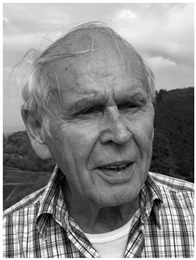![Catalysts 11 00422 i001]()
On 28 December 2020, Prof. Dr. Peter Grunwald died after a short, serious illness. Born in 1941 in Oldenburg, Dr. Grunwald studied chemistry from 1961 to 1965 in Saarbrücken and then in Hamburg. After his diploma (1969) in Physical Chemistry with Prof. Gunßer, he received his doctorate in 1974 in the same working group and remained loyal to the University of Hamburg, initially as a Lecturer, and since 2000, as a Professor. Through his research, he devoted himself to the field of biocatalysis, an area that has become increasingly important over the decades. Early on, Dr. Grunwald recognized the importance of immobilized biocatalysts that have become indispensable as environmentally friendly and energy-saving catalysts in white biotechnology. In the field of analysis, too, Dr. Grunwald showed that biocatalysts have great potential due to their high substrate specificity. His work on the interaction of microorganisms with heavy metals impressively demonstrates that noble metals can be effectively recovered from highly diluted solutions using yeast, and that microorganisms can successfully be used to detoxify wastewater contaminated with heavy metals.
In addition to his significant contributions to research, Dr. Grunwald has dealt intensively with the modern aspects of teaching. As head of the Physical Chemistry lab course, he knew how to transfer the latest research topics to practical teaching at an early stage, and to inspire many students about the course. He was particularly committed to training chemistry teachers and chemistry laboratory technicians. Even after his retirement, Dr. Grunwald was scientifically active until his death and wrote several textbooks. His kindness, paired with courteous willingness to help, expertise, and continuous commitment to the needs of the students, made him an esteemed colleague.
Dr. Grunwald joined the journal Catalysts in August 2017 and edited two Special Issues entitled “State of the Art and Future Trends in Nanostructured Biocatalysis” and “Immobilized Biocatalysts”, attracting a considerable amount of excellent research and review articles in the field of biocatalysis. I would like to give you the most sincere thanks for all your work and knowledge, and for your human greatness. Rest in peace.





